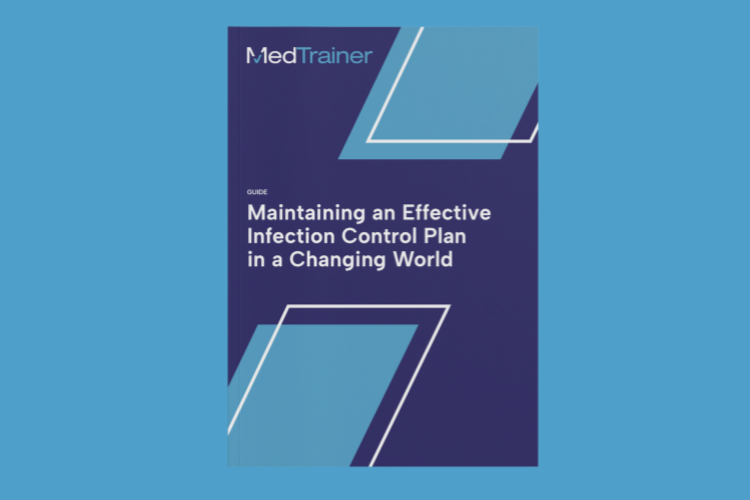Providers need to stay informed of regulatory requirements in our ever-evolving healthcare industry. Mandatory compliance programs have become the norm, with healthcare reform constantly in motion and increased scrutiny of providers and suppliers. But compliance isn’t just about meeting legal obligations — it’s also an opportunity for healthcare facilities to ensure accurate claims reporting and streamline internal processes.
A comprehensive compliance program can offer a range of benefits for healthcare organizations, from increased efficiency to better patient outcomes. Let’s explore some key advantages a robust compliance program can provide.
Staying On Top of Regulations & Laws
A good compliance program can help healthcare facilities avoid serious consequences such as fines, penalties, and criminal charges. In addition to the financial costs associated with non-compliance, it can also decrease patient trust and confidence in the facility. Healthcare organizations must prioritize compliance with all applicable laws and regulations.
Implementing an effective compliance program can be a game-changer. By developing policies and procedures that address all areas of potential risks, such as billing practices, patient privacy, and data security, healthcare facilities can prevent compliance issues from arising in the first place. Staff training on identifying and addressing potential issues before they become a problem is also crucial to a successful compliance program.
Regular audits of the organization’s operations can also help to identify any areas of concern or potential risk before they become a problem. These audits allow organizations to take corrective action quickly, minimizing the risk of serious consequences. Monitoring compliance programs regularly is important to identify areas where improvements may be needed.
Finally, staying up-to-date on changes in regulations and laws that could affect healthcare operations is essential. By staying informed about new developments in the industry, healthcare facilities can ensure that they remain compliant with all applicable laws and regulations. Healthcare organizations can avoid sanctions and maintain patient trust and confidence with a commitment to compliance.
Maintaining Compliance With Communication
Effective communication and proper documentation are crucial to ensuring compliance within healthcare facilities. Clear and comprehensive compliance protocols outlined in a well-documented manual can help organizations stay organized and prepared for regulation changes.
By establishing a centralized database of documents and deadlines, healthcare providers can simplify the compliance process and promote better communication, cooperation, and collaboration among team members. It also provides educational opportunities to keep up with changing standards and ensure everyone is on the same page.
Having a comprehensive compliance manual readily available to everyone in the organization is crucial. It allows each team member to understand their responsibilities and ensures everyone is up-to-date on the latest compliance requirements. A plan can minimize the risk of compliance violations and maintain the trust of patients and regulatory bodies.
Furthermore, a comprehensive compliance manual can help organizations track their progress. By identifying areas where improvements are needed, healthcare facilities can proactively address potential issues before they arise.
Improving communication among healthcare providers through a clear and comprehensive compliance manual is essential for ensuring compliance with federal and state regulations. It promotes a culture of compliance and can help healthcare facilities avoid potential issues that may arise due to changing laws or other factors.
Reduce Injuries and Healthcare-Acquired Infections (HAIs)
Ensuring patient safety is a top priority in healthcare organizations, and healthcare-acquired infections (HAIs) are a significant concern. Approximately 5-10% of patients who receive care in hospitals and other healthcare settings are affected by HAIs, making them a significant challenge for the healthcare industry.
To minimize the risk of HAIs, healthcare organizations must implement effective infection control practices and strategies. These may include:
- Protective barriers and PPE such as gloves, gowns, face masks, protective eyewear, and face shields
- Following proper hand hygiene protocols
- Using checklists to ensure completion of every procedure
- Implementing data-driven strategies to identify areas for improvement
In addition to these strategies, an efficient communications system is critical for promptly and thoroughly addressing compliance concerns. By encouraging open communication and collaboration, healthcare providers can work together to minimize the risk of HAIs and promote patient safety.
Take a deeper dive into infection control plans in this free ebook.
Incident Reporting Leads To Positive Policy Changes
Incident reporting is a key element of a provider’s compliance program that allows staff to report any potential violations of laws, regulations, or policies. This reporting system enables facilities to investigate and address compliance issues early, preventing them from escalating into more significant problems.
Providers can ensure that they comply with legal and regulatory requirements by reporting incidents and potential violations, avoiding potential penalties or fines. Additionally, incident reporting can help identify areas with an increased risk, such as medication errors or patient falls. Addressing these concerns can significantly improve patient safety, a top priority for any healthcare organization.
Furthermore, incident reporting promotes transparency in the facility’s operations and can improve trust with patients, families, and regulatory bodies. By analyzing incident reports, providers can identify areas for improvement in their policies and procedures, enabling them to implement changes that can reduce the risk of future incidents.
Trust & Respect: Keys to Healthcare Compliance
Maintaining a stable and positive workforce ensures optimal compliance standards in healthcare facilities. By fostering a company culture that prioritizes employee satisfaction, organizations can reduce employee turnover and create a work environment conducive to compliance.
Having a stable workforce well-versed in industry regulations and laws helps minimize errors and prevent potential compliance issues. Employees who feel secure in their positions are also more likely to report any suspicious or unethical behavior within the organization, enabling swift corrective action to be taken.
Not surprisingly, employees who are satisfied with their workplace environment tend to be more productive and motivated to perform at a higher level, resulting in improved patient care and customer service, leading to greater compliance from healthcare providers.
MedTrainer: Streamlining Healthcare Compliance
MedTrainer is the perfect solution for healthcare organizations looking to improve compliance and streamline their internal processes. Our all-in-one software solution provides an easy and affordable way to stay on top of compliance requirements specific to your organization. With MedTrainer, you can reduce redundancies and overcome shortcomings in healthcare administration.
Contact us today to learn more about our innovative solutions or to schedule a demo. With MedTrainer, you can help your organization remain compliant and productive.

